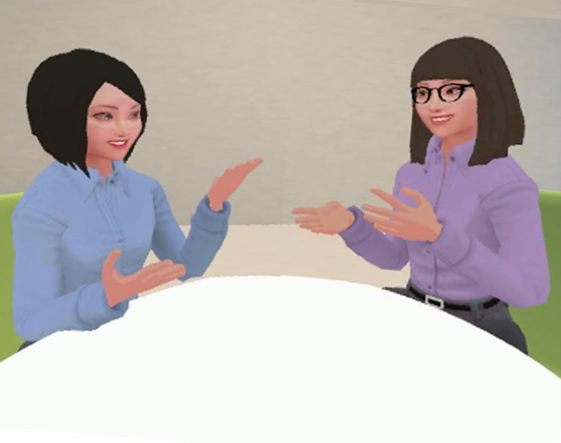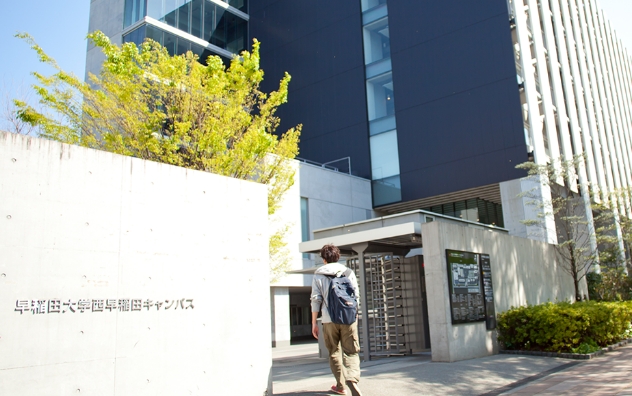Self-Disclosure in the Era of Video Communication and Embodied Virtual Reality
Thu, Jul 24, 2025-
Tags
Self-Disclosure in the Era of Video Communication and Embodied Virtual Reality
Researchers explore the effects of new communication media as well as gender on self-disclosure
Self-disclosure is vital for communication. In the present century, various innovative forms of communication have emerged, including video-conferencing and embodied virtual reality (VR). In this context, researchers from Japan have recently demonstrated that embodied VR, especially with unrealistic avatars, facilitates the revelation of personal feelings. Moreover, female-to-female pairing had the highest self-disclosure score, underlining the role of gender.

Image title: Factors affecting self-disclosure in cyberspace
Image caption: Researchers find that both the type of communication medium and gender influence self-disclosure.
Image credit: Professor Junko Ichino from Waseda University, Japan
License type: Original content
Usage restrictions: Cannot be reused without permission
Self-disclosure, or the process of conveying one’s details to others verbally, is crucial for communication. Self-disclosure includes expressing personal information, thoughts, and feelings. It encompasses self-expression and clarification, social validation and control, as well as relationship development, and is closely related to reciprocity, intimacy, trust, interactional enjoyment, and satisfaction.
In recent years, technological advancements have paved the way for new forms of communication, including video-conferencing and embodied virtual reality (VR). It is indispensable to shed light on the phenomenon of self-disclosure in this context to better understand relationship building and mental health.
With this goal, a team of researchers from Japan, led by Professor Junko Ichino from Waseda University (affiliated to Tokyo City University, Japan, at the time of study), including Mr. Masahiro Ide from the Tokyo City University and TIS Inc., Professor Hitomi Yokoyama from Okayama University of Science, Professor Hirotoshi Asano from Kogakuin University, and Professors Hideo Miyachi and Daisuke Okabe from Tokyo City University, has explored the effects of new communication media and gender on self-disclosure. Their findings were published online in Behaviour & Information Technology on June 4, 2025.
Prof. Ichino explains the motivation behind their research, “When I tried accessing VRChat, a social VR platform that gained popularity in Japan around 2017, I was surprised by the lack of polite or superficial conversation and the presence of freedom and directness of communication. I felt that these people would never interact like this in the real world, which led me to become interested in virtual spaces as a place for communication.”
Since self-disclosure is essential for communication, in addition to studies on self-disclosure in face-to-face conversations, there have been many studies on self-disclosure in conversations through text and voice, which are traditional communication media. Many studies have shown that conversations through text and voice encourage self-disclosure more than face-to-face conversations. However, little was known regarding whether new communication media, such as video-conferencing and embodied VR, encourage self-disclosure compared to face-to-face conversations. Therefore, the researchers investigated self-disclosure across four communication media: face-to-face, video, and embodied VR using both realistic and unrealistic avatars. They included 144 participants, aged 20 to 50 years, segregated them into 72 dyads, and encouraged them to develop conversations based on their personal topics. The participants underwent multiple self-disclosure sessions across the four communication media.
The researchers found that embodied VR, especially with unrealistic avatars, resulted in self-disclosure of personal feelings that were 1.5 times higher than in the face-to-face scenario. However, video communication did not differ noticeably from face-to-face. Furthermore, gender pairing also affected self-disclosure. To investigate how gender pairing affects self-disclosure, the researchers classified the participants into female-to-female, male-to-male, male-to-female, and female-to-male. Upon analysis, the team found that female-to-female pairings had the highest degree of self-disclosure, particularly the disclosure of personal information, regardless of the communication medium.
Since embodied VR facilitates self-disclosure of personal feelings compared to face-to-face, the team expects applications in various VR services related to self-expression, including counselling and psychotherapy services, where therapists interact with patients with ailments such as depression, dementia, cancer, adjustment disorders, and anxiety disorders and with clients with various mental symptoms. Moreover, the proposed innovation can lead to novel interventions in caregiver cafés for people who care for elderly people with dementia or who are bedridden, as well as in stress relief services where listening agents listen to people’s worries and anxieties about their physical condition and interpersonal relationships.
Overall, Prof. Ichino envisions a bright future sprouting from their breakthrough findings. “The shift to remote communication using communication media that surged during the COVID-19 pandemic is expected to continue because such media are required to achieve the UN’s Sustainable Development Goals. Additionally, the need for mental well-being support, which is closely related to self-disclosure, is expected to increase in the future.”
Together, the insights obtained from this study could be greatly utilised for applications that help in improving mental health.
Reference
Title of original paper: Effects of new communication media and gender on self-disclosure
DOI:10.1080/0144929X.2025.2507690
Journal: Behaviour & Information Technology
Article Publication Date: Jun 04, 2025
Authors:
Junko Ichino1, Masahiro Ide2,3, Hitomi Yokoyama4, Hirotoshi Asano5, Hideo Miyachi6, and Daisuke Okabe6
Affiliation:
1Faculty of Human Sciences, Waseda University, Saitama, Japan (Affiliation at the time of study: Faculty of Design and Data Science, Tokyo City University, Yokohama, Japan)
2Graduate School of Environmental and Information Studies,Tokyo City University, Yokohama, Japan
3TIS Inc., Tokyo, Japan
4Faculty of Management, Okayama University of Science, Okayama, Japan
5Faculty of Informatics, Kogakuin University, Tokyo, Japan
6Faculty of Informatics, Tokyo City University, Yokohama, Japan
About Professor Junko Ichino from Waseda University
Joined in 2025, Dr. Junko Ichino is a Professor at the Faculty of Human Sciences, Waseda University, Japan. Prior to this, she served as a Professor at the Faculty of Design and Data Science, Tokyo City University, Yokohama, Japan, from 2017 to 2024. Her research interests include computer-supported cooperative work (CSCW), virtual/augmented reality (VR/AR), human–robot interaction (HRI), interaction with public displays, and computer-supported creative activities. She has published numerous research papers in these fields, which have been cited about 450 times.














